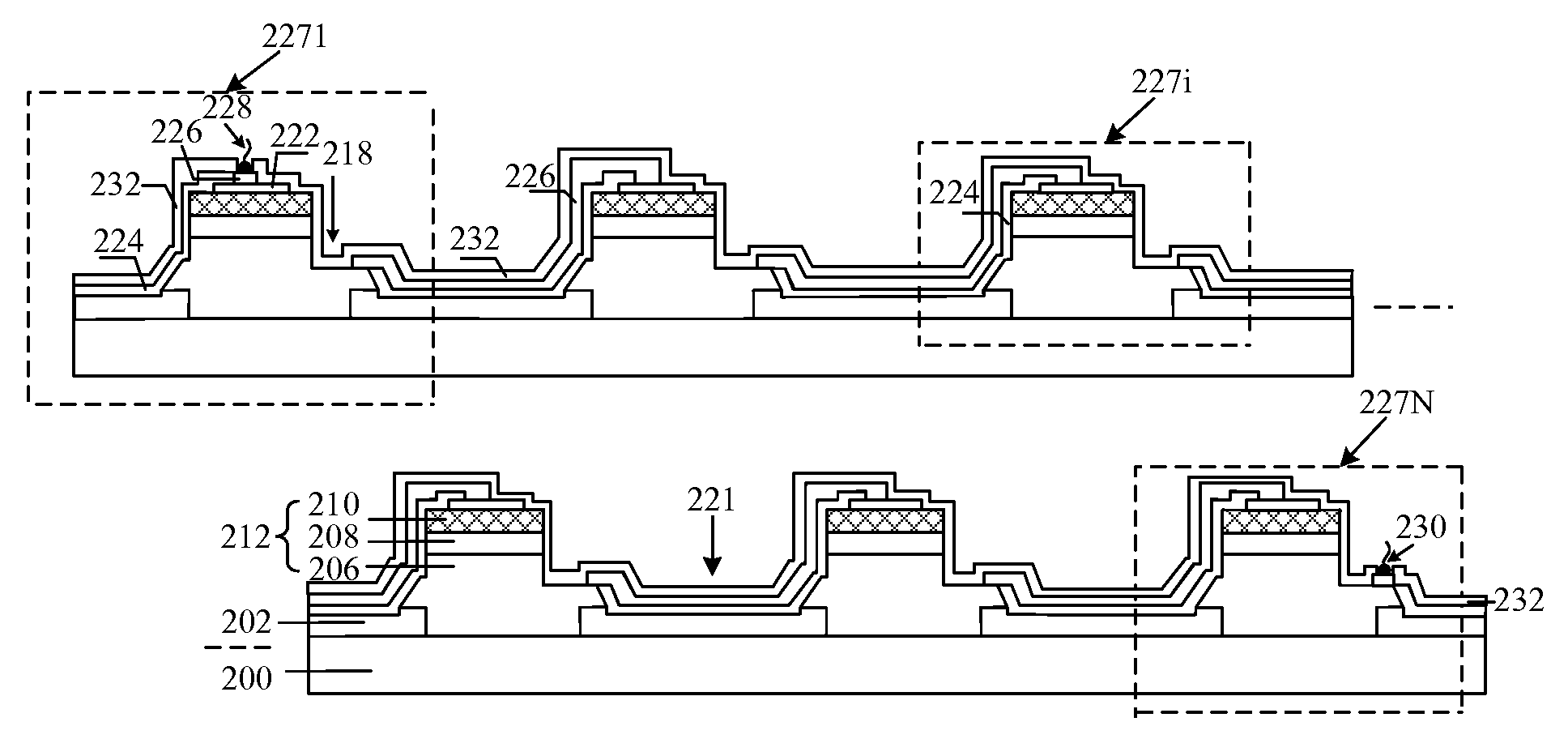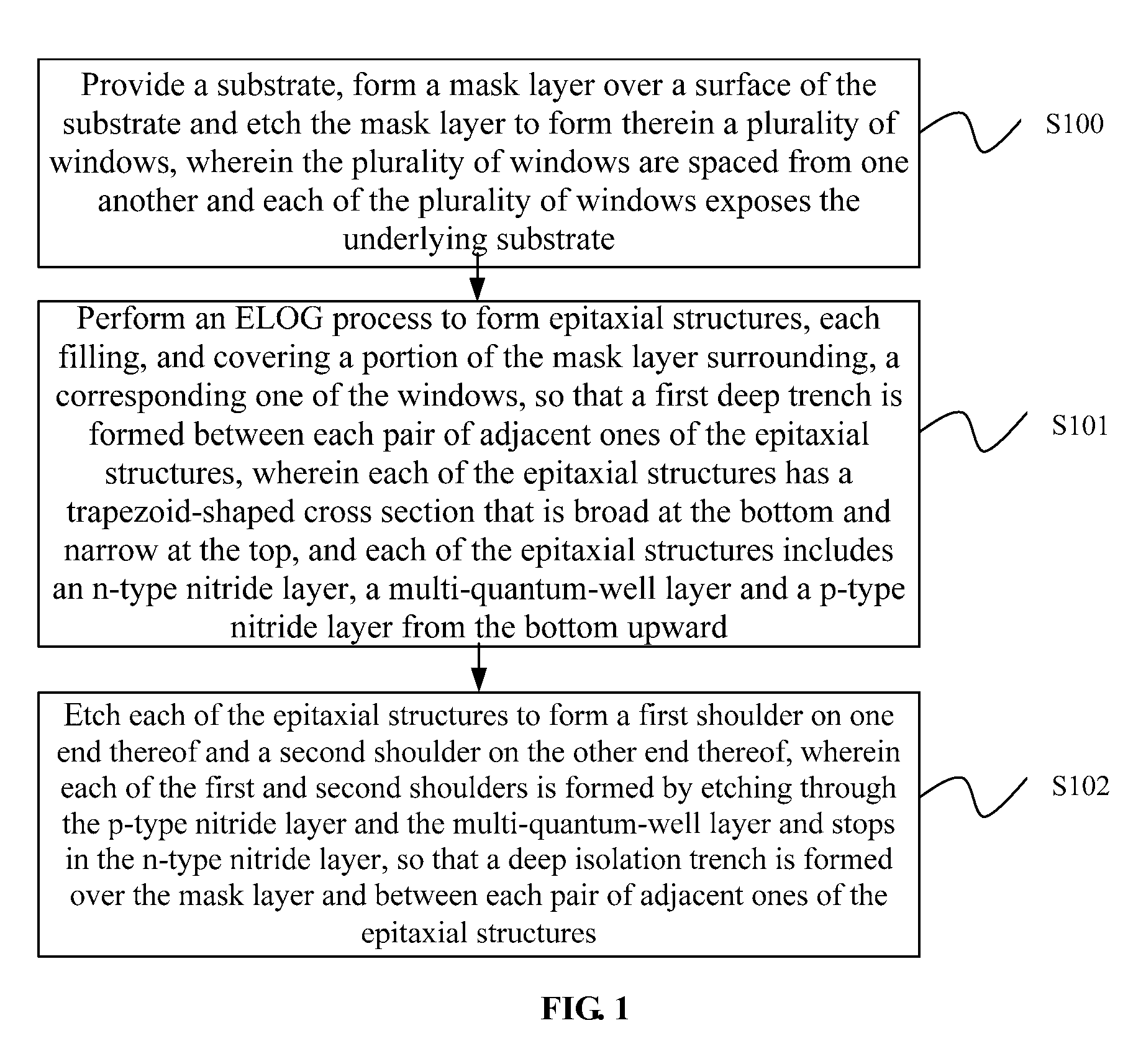Methods for manufacturing isolated deep trench and high-voltage LED chip
a technology of led chips and deep trenches, which is applied in the direction of basic electric elements, electrical equipment, semiconductor devices, etc., can solve the problems of shortening the service life of the chip, increasing the probability of light being absorbed, and affecting the reliability of the devi
- Summary
- Abstract
- Description
- Claims
- Application Information
AI Technical Summary
Benefits of technology
Problems solved by technology
Method used
Image
Examples
Embodiment Construction
[0028]The above and other objectives, advantages and salient features of the invention will become apparent from the following detailed description, which, taken in conjunction with the accompanying drawings, discloses preferred embodiments of the invention.
[0029]The embodiments are intended to describe aspects of the invention in sufficient detail. Other embodiments can be utilized and changes can be made by those skilled in the art without departing from the scope of the present invention. The following detailed description of the invention is, therefore, not to be taken in a limiting sense.
[0030]In addition, the accompanying drawings are schematic representations only and of which the cross-sectional views illustrative of the various steps may not be drawn to common scale, but partially enlarged for the sake of clarity in explaining the preferred embodiments. These schematic representations are exemplary configurations and they are not intended to be limiting. Further, while omit...
PUM
 Login to View More
Login to View More Abstract
Description
Claims
Application Information
 Login to View More
Login to View More - R&D
- Intellectual Property
- Life Sciences
- Materials
- Tech Scout
- Unparalleled Data Quality
- Higher Quality Content
- 60% Fewer Hallucinations
Browse by: Latest US Patents, China's latest patents, Technical Efficacy Thesaurus, Application Domain, Technology Topic, Popular Technical Reports.
© 2025 PatSnap. All rights reserved.Legal|Privacy policy|Modern Slavery Act Transparency Statement|Sitemap|About US| Contact US: help@patsnap.com



